Paul Urkijo: “‘Irati’ is a film for the general public”
Euskaraz irakurri: Paul Urkijo: “Publiko zabalarentzako pelikula bat da ‘Irati'”
“Irati”, the second feature film by filmmaker Paul Urkijo Alijo (Vitoria-Gasteiz, 1984), hits theaters today. As a new film by the director of “Errementari” is supposed to be, “Irati” is indeed framed by Basque history and mythology, as well as by the conventions of the fantastic genre, and this time also by action (the fights of swords and battles are perhaps the most ambitious ever filmed here), but above all Urkijo wanted to create “a love story”.
“Irati is a love story towards the mythology and history of the Basque Country, as well as action cinema, and also an ode to those who think and live in freedom”, the director stated about the film, starring Eneko Sagardoy and Edurne Azkarate .
We spoke with urkijo about this film set in the Basque Country of the 8th century, illuminated by the cultural struggle between monotheistic religions and other ways of looking at the world.
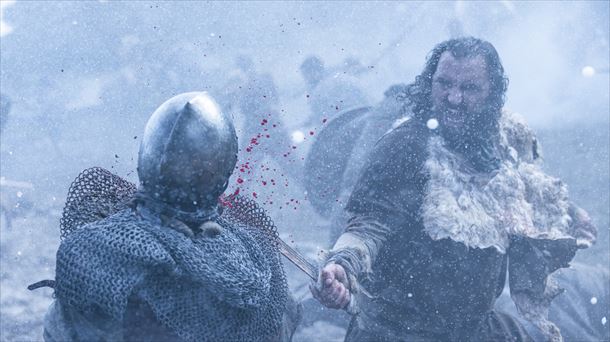
The film is based on the comic “El ciclo de Irati”, by Joxean Muñoz and Juan Luis Landa. What pushed you to turn it into a movie? What elements of that story should be unconditionally in the film and what space have you left to your imagination to round off the story?
Basque mythology has enchanted me since I was little: my parents would take me to the mountains, and they would tell me that Basajaun lived in the woods, that lamias lived in the rivers or that Mari hid in the caves.
In addition, at home we have always had books with stories compiled by Barandiaran and illustrated in the 80s… And the intention of making an epic film about Basque mythology, with swords, capes and weapons, has always been on my mind. everything related to the medieval world.
In the 90s I read the comic “The Irati cycle”, and I found in it all those historical and mythological elements necessary to tell a story set in the 8th century: the young Christian Eneko and Irati, a pagan girl who lived in the forest…
The comic is aimed at a younger audience, and has that French touch of Perceval or Asterix, but it has interesting elements that need to be given a darker tone and could be interesting to adapt to a more mature audience.
From there, it occurred to me that we could make a Basque adventure and epic fantasy film by transferring all these obsessions to the sword and sorcery genre.
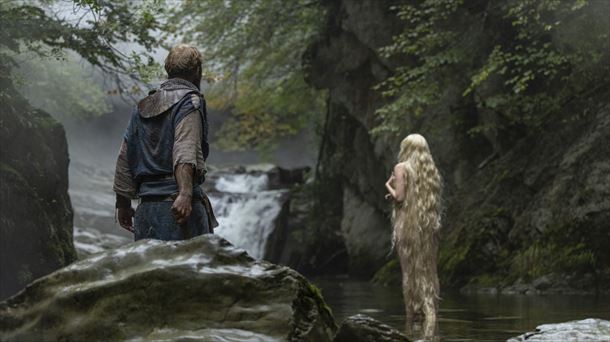
All the elements of the story are conscientiously worked. What was the process of creating the film like and how long did it take until you started shooting?
This time there have been five years of preparation.
As I am also an illustrator, I usually work on the concept art while writing the story: I travel to the locations, I draw what the mythological characters will be like… And then I create a little book bound with the concept art, with which I show the producers and producers that the story is feasible.
When working on fantasy, since I was making short films, I began to think about the film based on its shortcomings: how we can shoot the battle sequences, how to approach mythological creatures from a visual and narrative point of view so as not to end up making a film full of special effects. but closer to magical realism…
Starting from there, I talk to all the teams, and we address the needs of each section.
Filming would not be easy either: battles with many elements, horses, many outdoor sequences, caves, cold, many lighting changes… What memories do you have of the filming?
I usually take the projects, all the plans, very closed, but in this case, since nature has a great role, I left a lot of room for the organic. So, despite the fact that it is a big film, I have been calmer, perhaps thanks to the accumulated experience, and I have enjoyed it a lot.
For this, of course, the team of “gudaris” that I have been behind and that has accompanied me through forests, caves and mountains has been very important. There has been a very good atmosphere on set, and the film exists thanks to the energy of the entire team.
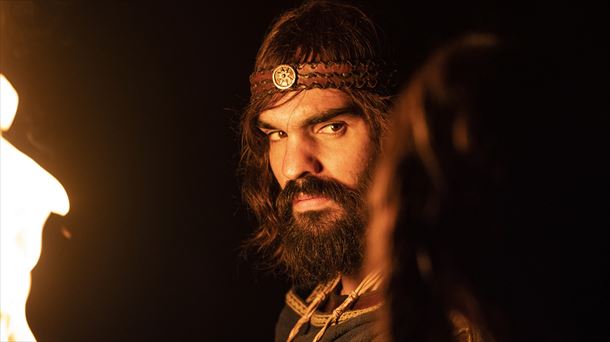
Eneko Sagardoy, in ‘Irati’
I have known Eneko for a long time, since “Errementari”, and he is a fabulous actor. Precisely, when we were promoting “Errementari”, I already had “Irati” in my head, and then I suggested that she play Eneko Aritza. When I imagined that medieval Eneko, I had the face of Eneko Sagardoy in my head.
He has done a tremendous job: he has changed his physical appearance, he has ridden a horse, he has fought with the sword…. In addition, he has endowed this character from the Middle Ages with a very beautiful dramatic arc: as the story progresses, Eneko’s Christian beliefs are diluted, Eneko’s character undergoes a transformation, and Eneko shows us that transition simply through of the look
For her part, she did not know Edurne, and it has been an incredible surprise. I did a casting to find Irati, and we got a tremendous surprise. When Edurne’s turn came, she brought the old Basque worked from start to finish, and we freaked out.
The character has a wild touch, he lives in the forest, but he has to project a magnetic look, as well as sadness and loneliness, and I saw that very clearly in Edurne. Then we did a second test already together with Eneko, and we already saw that chemistry that has later been endorsed on the screen. That’s when I first saw my hero pairing.
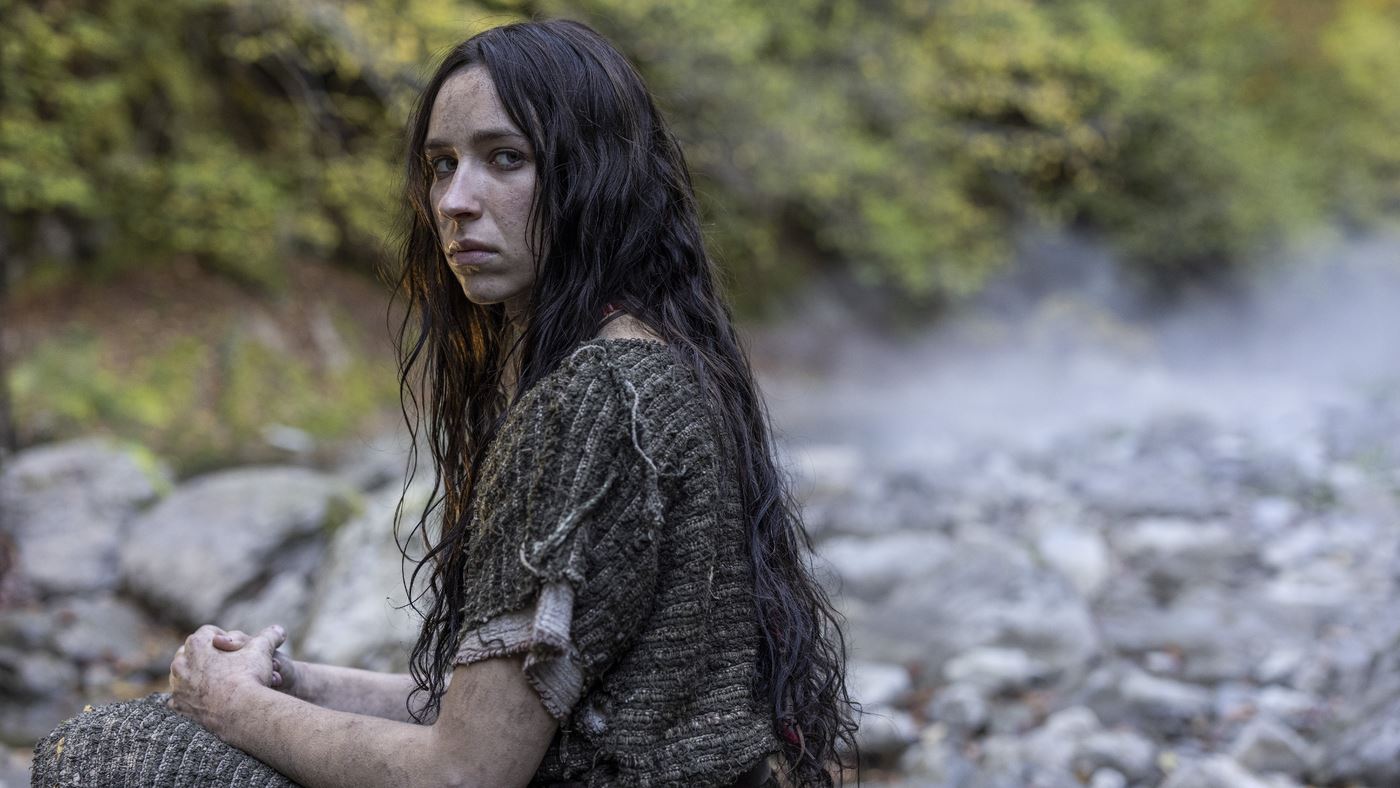
Edurne Azkarate, in ‘Irati’
The speech is very well worked: there are many puns and the register of each one helps to define the characters, the speech is almost one more character. How will the film be screened in Basque cinemas and abroad?
The decision to use Basque was very rigid, since the film emanates from the stories in Basque. In addition, with “Errementari” we already see that people from abroad appreciate that the film is in Basque.
For the Basque speakers, we have tried to build the Basque language of the Middle Ages with the help of Gorka Lazkano. We have not carried out a documentary exercise, it is not a meticulous reconstruction of the Basque language of the time, but rather a kind of texture that helps the viewer to immerse themselves more in the Middle Ages.
In addition, there will also be another version dubbed into Spanish, because the Spanish market requires it, but we will try to ensure that as many cinemas as possible offer the original version in Basque.
The film has already made its way before reaching theaters: it premiered successfully in Sitges, it was also screened at the San Sebastián Fantastic Film Week (it won awards at both), at the Durango Fair… What response have you received? received so far?
We premiered it at the Sitges festival, and it was a blast. We very proudly defended Euskera and Basque mythology in the Official Selection, and the projection was beautiful. People embraced the film, and we received tremendous applause. In addition, we won the audience award.
From there, the premiere in Euskal Herria was in the Fantastic Film Week of San Sebastián, and we also got the prize, as in Malaga, Tenerife…
People are liking it a lot, and I am calmer in view of the theatrical release. But the nerves are always there, since I make films for the public and I’m looking forward to seeing it.
“Irati”, like “Errementari”, is a genre film and both have been very well received on that circuit (Sitges, Fantastic Film Week…). However, perhaps due to the specificities of our cultural system, “Irati” will occupy the center and will surely become the most important premiere of the year. How do you live that duality?
The genre is my favorite territory, what I enjoy the most is fantasy and horror, I have always done that and I would like to continue doing it. And it’s about being able to offer the public those kinds of stories. I don’t think that people don’t want to see this type of film, since the highest grossing genres are the fantastic ones: superheroes, epic films, horror…
But some reflection is necessary. We must not only consume foreign products, but rather think that we can also make them here. We have incredible material and excellent technicians and techniques to be able to make and export those stories.
Even so, I would say that “Irati” is a fairly transversal film, which, in addition to fantasy, has a story, a plot, action and entertainment. It is a film for the general public.
The story captures the violent pulse of the eighth century between paganism and organized religions. Having seen what we have seen, have we essentially changed in thirteen centuries?
To summarize the film, we use the phrase “everything with a name exists”, which is related to preservation; that is the message of the film.
On the one hand, “Irati” is a reflection of the survival of all those myths that have come down to us through oral tradition, but it could also be a source of inspiration for others so that this chain has continuity. .
On the other hand, all these creatures from Basque mythology are deeply rooted in nature, and “Irati” also wants to be an invitation to respect it. If we endow nature with a name, a character and the importance it deserves, we will maintain it.
In addition, being set in the Middle Ages, the film also shows the way in which globalizing monotheistic religions erased other ways of understanding the world: different ways of describing, different languages, different colors…
The great movements absorb and syncretize those rays of color, and “Irati” tries to be an ode to those movements for a thought and a life in freedom.
So nothing new…
I am a small link in the chain formed by those books I received as a child or, more recently, the song “Mari” by Su Ta Gar. Many Basque men and women have done their bit, and “Irati” is mine.
I would like that, from now on, more people, inspired by “Irati”, would contribute their link, and that this chain would become endless and eternal.
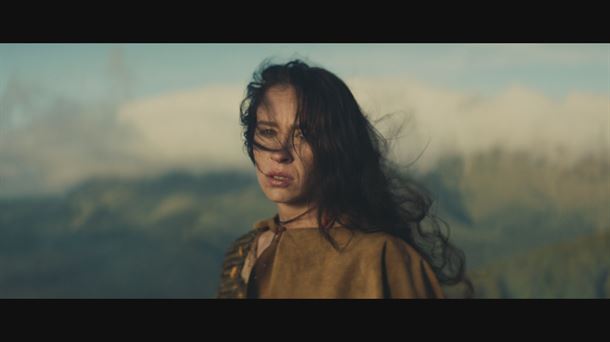
Do you have other projects in hand?
There I go. I still can’t detail what it is, but it’s on the same path. I will continue to create fantasy using the folklore elements of our culture, that is my bet. I love it and I love it.
What future do you wish for “Irati”?
I would like people to go to theaters to see the movie on the big screen. We have tried to make the most epic film possible: we have shot in anamorphic, in panoramic, we have taken great care of the sound… And I would love for people to feel the emotion that they have not felt in the cinema for a long time.
Hopefully, when leaving the “Irati” room, she enters the hearts of the public and they take her home to reflect and be moved by her. May the public make it theirs forever.
Source: Eitb
Bruce is a talented author and journalist with a passion for entertainment . He currently works as a writer at the 247 News Agency, where he has established himself as a respected voice in the industry.











